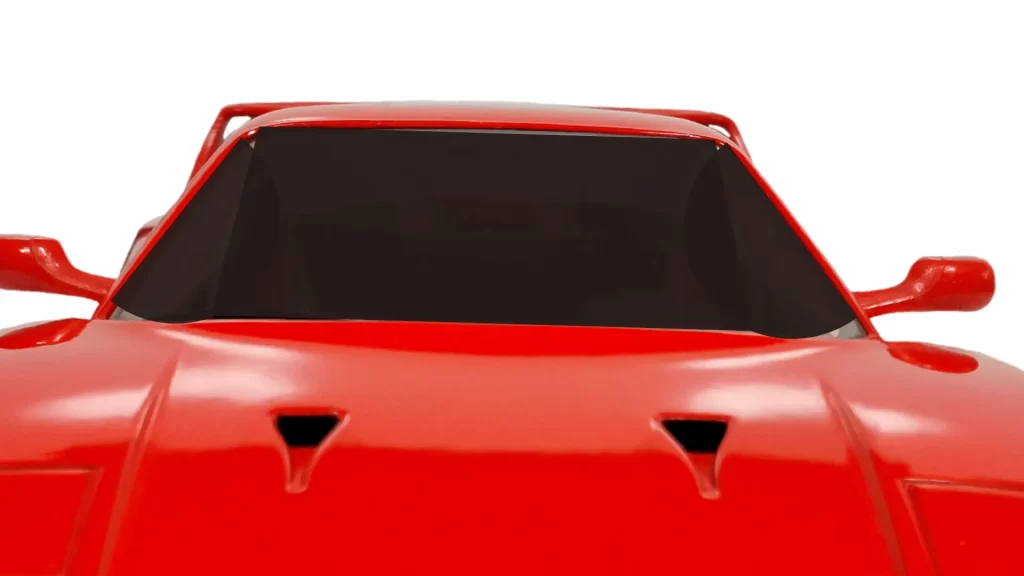A window film that is tinted with a 10% film will only allow 10% of light to pass through, as it blocks 90% of the normal amount of light. While this level of tint is not the darkest option available, it is still quite effective at blocking UV rays and providing privacy. It should be noted, however, that in the United States, it is illegal to apply a 10% tint on the front windows of any vehicle in all states except Michigan. It is only legal to use a 10% tint on the back or rear windows of a vehicle in some states.
What does 10% tint look like?
A window with a 10% tint will appear very dark and will significantly reduce the amount of light that can pass through the window. From the outside, a window with a 10% tint will appear almost black, while from the inside, it will allow some light to pass through, but will still appear quite dark. The amount of light that can pass through a window with a 10% tint will depend on the lighting conditions outside and the color of the film. For example, a window with a 10% tint that is facing north on a cloudy day will appear darker than a window with a 10% tint that is facing south on a sunny day.

Additionally, a window with a 10% tint that is tinted with a lighter color film will allow more light to pass through than a window with a 10% tint that is tinted with a darker color film.
Car Window Tint Percentage Visualization Tool
Select a percentage value from 1 to 100 to see how dark it is:
Selected Percentage:
Use the basic window tint visualization tool above to see how dark 10% tint is. Set the value to 10 and the tool will simulate the tint percentage for the most common black tinting film. However, for other tint colors, use our advanced tint percentage visualization tool. That said, the car picture below shows the comparison between no tint and 10% tint.

Can you see through 10% tint at night?
It is generally easier to see through a window tint at night than it is during the day, because there is typically less light available. However, the amount of visibility you will have through a 10% tint at night will depend on the lighting conditions and the specific tint product being used. In general, you can see through 10% tint at night, but it will still reduce visibility to some extent.
10 vs 15 percent window tint
The difference between a 10% and 15% window tint is the amount of light that is allowed to pass through the tinted window. A 10% tint will allow 10% of the light to pass through, while a 15% tint will allow 15% of the light to pass through. This means that a 10% tint will be darker and more effective at blocking light and heat, while a 15% tint will be slightly lighter and less effective at blocking light and heat. It is important to consider the level of tint that is appropriate for your specific needs, as well as any local laws or regulations regarding window tinting.
How much does 10% tint cost?
The tinting cost of a vehicle with 10% tint will vary depending on several factors, including the size and type of windows being tinted, the location of the vehicle or building, and the specific tint product being used. In general, the cost of window tinting can range from a few hundred dollars for a small vehicle to several thousand dollars for a large building or commercial vehicle.
To get a more accurate estimate of the cost of a 10% tint for your specific situation, it is best to contact a local window tinting service and ask for a quote. Keep in mind that the cost of tinting may also vary based on any additional services that you may want, such as installation of heat-rejecting or infrared-reflecting films, or the application of specialized coatings for added durability or protection against fading.
Is 10% tint worth it?
Whether a 10% tint is worth it will depend on your specific needs and preferences. Some people may find that a 10% tint provides the level of privacy and UV protection that they desire, while others may prefer a darker tint for these purposes. Additionally, the legality of a 10% tint will vary depending on where you live and the specific laws in your area. In some states and countries, a 10% tint is illegal on the front windows of a vehicle, while in others it may be allowed. If you are considering applying a 10% tint to your windows, it is important to research the laws in your area and consider how the tint may affect your visibility while driving.
Conclusion
The darkness of a window tint is typically measured by the percentage of light that is blocked by the film. A 10% tint means that the film blocks 90% of the light, so it is quite dark. In general, a 10% tint is very difficult to see through from the outside, especially at night. It is also difficult to see through from the inside when the windows are rolled up, but when the windows are rolled down, visibility is improved. A 10% tint is often used for privacy or to block UV rays, but it is not the darkest option available. There are darker tints on the market that block more light, such as a 5% tint or even a limo tint, which blocks almost all light.

